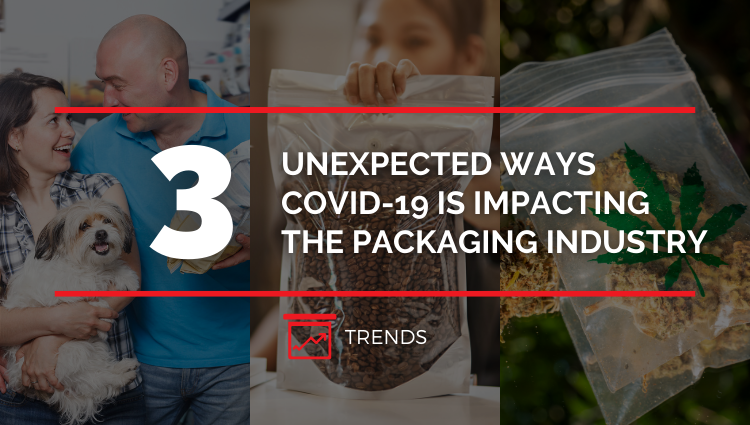Walmart's New Packaging Playbook is Upping the Game for Packagers
 In October of 2016, Walmart unveiled a packaging playbook intended to provide guidance and best practices to brand-owner vendors, private label manufacturers, and suppliers of packaging. The goal of the playbook is twofold: to increase the adoption of sustainable packaging practices and reduce costs. The three recommendations of the report are to optimize design, source sustainably, and support recycling. Let's take a deeper look into what exactly this means for consumer packaged goods (CPG) companies and contract packagers.
In October of 2016, Walmart unveiled a packaging playbook intended to provide guidance and best practices to brand-owner vendors, private label manufacturers, and suppliers of packaging. The goal of the playbook is twofold: to increase the adoption of sustainable packaging practices and reduce costs. The three recommendations of the report are to optimize design, source sustainably, and support recycling. Let's take a deeper look into what exactly this means for consumer packaged goods (CPG) companies and contract packagers.
Optimize Package Design
According to Walmart's Packaging Playbook, the main tenets of package design optimization are protecting the product and reducing packaging materials. These two concepts can often seem at odds with one another if subscribing to the conventional wisdom that more packaging equals a better-protected product. Walmart is encouraging its packaged goods manufacturers and packaging suppliers to take a second look at their packaging for redundancies, non-value-added components, and areas where packaging can be reduced without impacting product protection.
 The Greener Package reports that Walmart Senior VP Scott McCall considers optimization of package design a game of inches. "If you think about our stores, let’s just say a supercenter has 120,000 items in it. If we took one inch out of every item—obviously some would be more, some would be less—we’re talking about 120,000 inches. That’s 10,000 feet, almost two miles of packaging reduced in just one Supercenter. Pretty impactful, huh?"
The Greener Package reports that Walmart Senior VP Scott McCall considers optimization of package design a game of inches. "If you think about our stores, let’s just say a supercenter has 120,000 items in it. If we took one inch out of every item—obviously some would be more, some would be less—we’re talking about 120,000 inches. That’s 10,000 feet, almost two miles of packaging reduced in just one Supercenter. Pretty impactful, huh?"
McCall gave an example of a nicotine gum supplier reducing the packaging of its product by one inch. This did not materially affect the product but reduced the packaging by 6%, or 20,000 pounds of material annually.
Source Packaging Sustainably
The second tenet of Walmart's Packaging Playbook recommends maximizing recyclable, sustainably sourced, and renewable content, as well as enhancing material health. The main questions this initiative asks are: Have the packaging materials been sourced in a way that's environmentally responsible? And, does the packaging material contain priority chemicals? Walmart defines priority chemicals as substances that are carcinogenic, mutagenic, reproductive toxicants, or otherwise are regarded by the scientific community via direct evidence to cause probable serious effects to human health or the environment.
 Support Recycling
Support Recycling
The third and final recommendation of Walmart's Packaging Playbook recommends not only supporting recycling of packaging but effectively communicating recyclability to consumers as well. Packaging Digest reports that as part of the support recycling pillar, Walmart will soon roll out the How2Recycle Label on select Great Value and Equate products.
Research shows that two-thirds of consumers will not recycle a product if not given explicit instructions on the package. Labeling it 'recyclable' isn't enough to influence change. As seen in the example at the left, the How2Recycle Label is a standardized system that provides clear recycling instructions to consumers.
The Bottom Line
Sustainably sourced, right-sized, and communicative packaging is soon going to be the 'new normal' as contract packagers and consumer packaged goods (CPG) companies begin to follow the guidelines of one of the largest, most influential retailers in the world.
There will be a need for versatile packaging machinery that can reliably run the latest in sustainable packaging materials, as well as integrate with labeling equipment and other ancillary items necessary to create packaging that complies with the recommendations laid out in Walmart's Packaging Playbook.
Even if you are a seasoned packager, keeping up with the constant changes in the industry can be overwhelming at times. Let us do the hard work for you! Subscribe to our packaging blog at the right for the latest news, delivered right to your inbox at only the frequency you choose.




